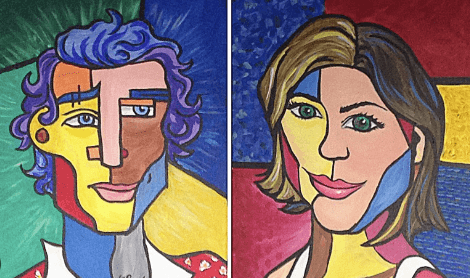Self Portrait:7nbjan9hwte= Picasso Paintings

The painting “Self Portrait: 7nbjan9hwte” serves as a profound exploration of identity through Picasso’s distinctive lens, characterized by vibrant hues and innovative brushwork. This artwork not only reflects the artist’s introspective journey but also compels viewers to confront their own notions of self. By employing unconventional forms and perspectives, Picasso invites a reevaluation of personal identity and emotional expression. As we examine the historical context and artistic techniques employed, the implications of this piece on modern art become increasingly significant—prompting a deeper inquiry into the complexities of human experience.
Historical Context of Picasso
Emerging from the tumultuous socio-political landscape of late 19th and early 20th century Europe, Pablo Picasso’s artistic evolution cannot be fully understood without considering the historical context that shaped his vision.
Picasso’s influences were profoundly rooted in the emerging artistic movements of the time, such as Impressionism and Symbolism, which catalyzed his revolutionary approach to form and color, ultimately redefining modern art.
See also: Shrug Emoji: Copy
Analysis of Artistic Techniques
Numerous artistic techniques employed by Pablo Picasso underscore the depth and complexity of his work, revealing a masterful command over form, color, and perspective.
His innovative use of a diverse color palette enhances emotional resonance, while distinct brush techniques add texture and movement.
These elements not only challenge conventional aesthetics but also invite viewers to engage deeply with the multifaceted nature of his artistic expression.
Themes of Identity and Self-Reflection
At the core of Pablo Picasso’s oeuvre lies a profound exploration of identity and self-reflection, as he navigates the intricacies of the human experience through his art.
Through innovative identity exploration and various self-reflection techniques, Picasso invites viewers to confront their own perceptions of self. His work serves as a mirror, prompting an introspective journey that emphasizes the fluidity and complexity of personal identity.
Impact on Modern Art
Picasso’s exploration of identity and self-reflection transcended personal introspection, ultimately reshaping the landscape of modern art.
His Cubist influence redefined forms, encouraging artists to embrace emotional expression and challenge traditional perspectives.
This shift fostered cultural relevance, allowing abstract representation to convey complex narratives.
Conclusion
In summation, “Self Portrait: 7nbjan9hwte” serves as a mirror reflecting the intricate tapestry of identity and emotional complexity that Picasso deftly weaves through his innovative techniques. This painting not only captures the essence of self-exploration but also reverberates through the corridors of modern art, influencing generations of artists. Just as a prism refracts light into a spectrum, Picasso’s work illuminates the multifaceted nature of the human experience, inviting continuous inquiry and engagement with the self.





